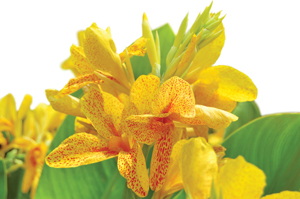Q. What’s the difference between a mole and a gopher? I believe I have a gopher in my garden; however, others say it’s a mole. Plants are disappearing and the roots on one of my roses have been eaten.
A. In California, moles and gophers are too different rodents with different controls. This is not the case in many other states, like Washington.
Gardeners and non-gardeners will refer to them interchangeably. The Nursery Professional(s) at your favorite garden center is an excellent resource to help with conflicting information. There are some physical differences between them, but few get that close so here is how to separate the two. Moles do not eat plants. Their diet is protein based, so they forge and tunnel the soil surface for insects, grubs and earthworms. The best way to control moles is to eliminate the food source forcing them elsewhere. Bonide Mole Med is a granular repellent made with Castor Oil. It coats the soil bugs making them not very tasty. Another option is Beneficial Nematodes. Beneficial Nematodes seek out and destroy grubs and soil insects but not earthworms. They’re both safe for people, pets and the environment.
Gophers, on the other hand, do eat plants and are know to pull them underground. They live in burrows, travel about two feet under the soil in runs and come to the surface with exit holes. Gophers are much more difficult to control than moles. Flooding, trapping, poison baits and gas are the primary methods of controlling gophers. In addition, they’re hundreds of home remedies. Unfortunately, there is no 100% sure proof answer. It’s all trial and error. The major mistakes people make with gopher controls is not wearing gloves. The traces of humans scent, alerts the gophers. Also, the controls need to be placed in the major runs not the exit holes. You are correct suspecting a gopher.
Q. I removed a patch of out of control Canna. My problem now is that I didn’t get rid of all of them. They’re starting to shoot up between the newly planted plants. Any suggestion on an herbicide I can use?
A. Canna Lilies can become a nuisance when left to grow unattended. They’re contained by dividing the clumps every three-years or so in the fall or spring. You don’t have to be particularly careful about it either. For this situation, Round Up or similar type product is the ideal herbicide to use. The leaves and not the roots absorb the herbicide, so it can be applied around plants without harming them. You protect desirable plants with a cardboard plant shield or you can use any type of plastic cylinder like, a beverage container. The herbicide should be applied with a tank sprayer rather than a hose-end sprayer. You’re now able to effectively pot treat the area, but more importantly minimize the spray drift that will damage the desirables. You’ll have to be persistent as it’s a battle of attrition but you should win it.
Buzz Bertolero is Executive Vice President of Navlet’s Garden Centers and a California Certified Nursery Professional. His web address is www.dirtgardener.com and you can send questions by email at dirtgarden@aol.com or to 360 Civic Drive Ste. ‘D’, Pleasant Hill, Calif. 94523 and on Facebook at Facebook.com/Buzz.Bertolero
Leave a Reply